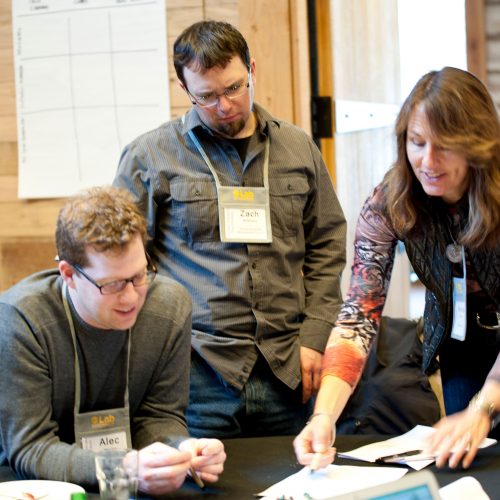
eLab Accelerator 2016
Minnesota e21 Initiative

Project Objective
To implement a customer-focused, performance-based regulatory approach that aligns the way utilities are compensated with achieving an agreed-upon set of performance outcomes, rather than simply rewarding capital investment and electricity sales.

Team Members
Sonia Aggarwal (Energy Innovation)
Mike Bull (MN Center for Energy and Environment)
Jessica Burdette (MN Department of Commerce)
Jenny Edwards (MN Center for Energy and Environment)
Dan Lipschultz (MN PUC Commissioner)
Rolf Nordstrom (Great Plains Institute)
Matt Schuerger (MN PUC Commissioner)

Project Description
Launched in February 2014, Minnesota’ e21 Initiative is a consensus-based, multi-stakeholder effort to better align the way utilities are compensated with customer expectations and public policy goals, and enable MN to adapt to rapid technology change at the distribution edge. In its first phase (Feb. to Dec. 2014) e21 achieved consensus on shifting toward a more consumer-centric, performance-based regulatory approach and utility business model (see Phase 1 report). e21’s second phase (January 2015 to May/June 2016) has been devoted to developing the next level of detail necessary for implementation. e21 subgroups are preparing white papers on performance-based compensation (often called performance-based regulation or PBR), grid modernization and integrated system planning, all due out by mid-summer 2016. Next we expect to evolve the structure of e21 to shorten the distance from recommendations to implementation by regulators. The new structure will: More deeply engage regulators and regulatory staff on an on-going basis; Open up the e21 process to a wider range of interests—including more consumer voices—allowing those not previously at the table to attend e21 meetings. This will maintain e21 as a valuable platform for mutual learning and information sharing and will help to minimize unnecessarily adversarial and costly disputes in the formal regulatory process; and, Provide more opportunity to engage regularly with national experts to have the e21 process benefit from the best thinking and practice. Topically, we expect e21 to turn its attention to the next steps on grid modernization and rate reform (to leverage the PUC’s e21-inspired grid modernization and rate reform initiatives), including novel options for low-income consumers.

Progress Made to Date (pre-Accelerator)
e21 has accomplished the following: Consensus recommendations on evolving MN toward a more consumer-centric, performance-based regulatory approach and utility compensation model; Legislation passed in 2015 that enables multi-year rate plans (raised cap from 3 year to 5 years), encourages development of performance measures, and requires distribution plans for any utility submitting a multi-year plan; The launch of a PUC-led grid modernization process; and a separate but related process to examine rate reform options. Implementation-focused white papers under development on grid modernization, PBR and integrated system planning, with a mid-summer 2016 due date for publication.

Project Background Information
At Accelerator, the Minnesota e21 team reviewed the activities of the initiative in its first two years, taking stock of the successes of their work and to consider areas for improvement. The team identified a set of ongoing challenges that require attention, including making the electricity system more customer-oriented, and modernizing the utility business model to achieve public policy objectives. Team members turned a critical eye to e21's current organizational structure, to consider specific ways to make their work more focused and action-oriented, and to be in service to state policymakers. In order to better serve e21's goal to accelerate the transition to a 21st Century electricity system for Minnesota, the team developed a new operating structure for the initiative, as well as agreed to a set of next steps and critical milestones to carry their work forward.